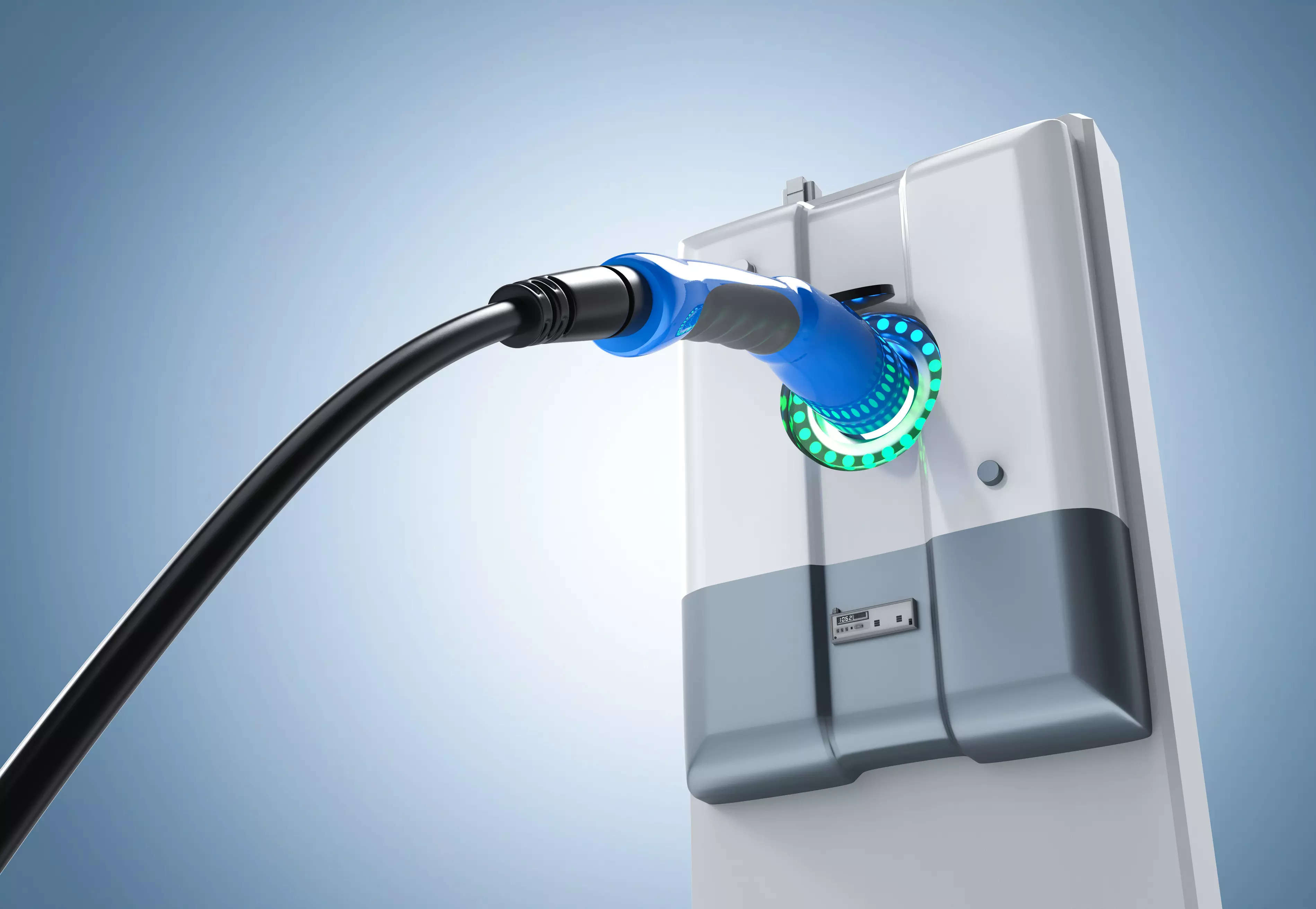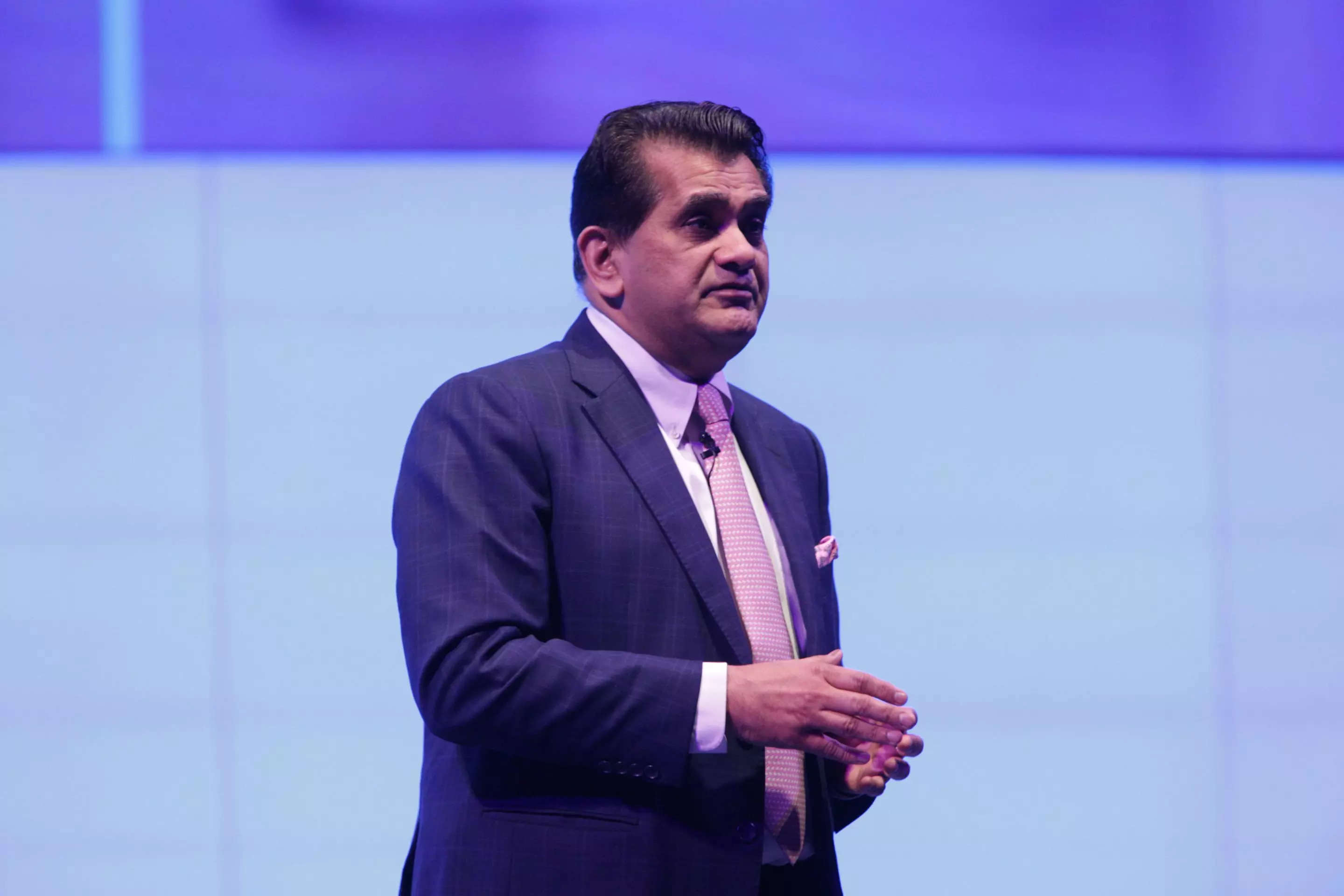
When Roshan John, a Bengaluru-based IT engineer, brought home an electric scooter in June this year, he ran into an unforeseen problem: the residents welfare association (RWA) in his housing society would not allow installation of an EV charging point at his parking bay. John has to take his scooter a kilometre away from home to charge it.
The story is the same for electric vehicle owners across Indian cities, but help is on the way.
Many governments and leading real estate developers are taking measures to ensure at least upcoming residential complexes have adequate vehicle charging facilities as EV adoption picks up across the country.
“EVs have become more mainstream… Potential residents will want EV charging as an inbuilt amenity in their apartment, like air conditioners,” said Amitabh Kant, chief executive officer of official think tank Niti Aayog.
“Several states, as part of their EV policies, have already announced that EV charging would be a mandatory requirement for new buildings, especially large-scale buildings,” he said. “It now remains to be included in the byelaws to become enforceable.”
Leading real estate developers including Hirandani Group, DLF and K Raheja Corp have started including EV charging in their new complexes.
“We have signed with EV charging and battery swapping solution provider EVRE to install and operate EV stations within the integrated township (in Thane), the electricity for which is being supplied by MSDCL service,” said Niranjan Hiranandani, founder and MD of Hiranandani Group.
“EV charging points for individual parking at the request of residents can also be installed,” Hirandani said. “Future development within the township will have pre-installed charging points, cabling and equipment.”
The company plans to follow it up by installing EV charging stations in its projects in Navi Mumbai, Chennai and Powai.
Ramesh Ranganathan, CEO of K Raheja Corp Homes, said the developer’s upcoming residential projects will be equipped with EV infrastructure through alliances with EV operators.
DLF, too, has installed EV charging points in all its new projects in Delhi and NCR. “While these are in dedicated locations in each project, we are installing meters and EV points as per customer’s requests as they buy an EV,” a company spokesperson said.
CHANGING ATTITUDE
Things are getting better for EV owners living in older residential complexes as well.
While RWAs in many societies continue to deny permissions for setting up charge points as they are not familiar with EV charging, many others are looking to set up the necessary infrastructure.
“EV users are still a minority in most residential complexes and RWAs have their own constraints of safety in setting up more charging points within the complex,” said a member of an apartment federation in South Mumbai who requested not to be identified.
There is also uncertainty about who would pay for the power used in EV charging, an RWA official said.
But experts said such fears are unfounded and, in fact, many societies have started negotiating with EV charging network operators to set up charging points.
“Residential communities have a lot of anxieties and queries but eventually they understand and welcome us,” said Sandeep Bangia, head – EV charging business at Tata Power.
Tata Power has an EV charging network of over 5,000 home chargers and nearly 700 public charging points in 129 cities across India.
“We have partnered with residential developers across the country through our EV charge network,” Bangia said. “Many of the new and upcoming residential complexes are factoring in space necessary for EV charging and we have explored such partnerships with residential societies of Lodha, Raheja and Uniworld among others.”
Experts said electricity distribution companies (discoms) should have operational guidelines for residential complexes that would like to install EV chargers.
Also, states could consider extending the benefits of the EV tariff (which is currently restricted to public chargers in most regions) to residential charging, they said.
Delhi government offers up to Rs 6,000 subsidy per charger for the first 30,000 chargers installed, including residential chargers. The installation costs for chargers borne by discoms are subsequently recovered through electricity bills.
The recent launch of the Indian Standard for Light Electric Vehicle AC charge point is expected to increase the market for low-powered, low-cost charging points, easily installable for residential charging.
Aayog’s Kant said it is easy to ensure EV owners pay for the power used for charging their vehicle by connecting the charger with her/his electricity account. In case of a common bank of chargers in residential complexes, EV owners can have their own charging account and charge their vehicles on a pay-per-use or monthly payment basis, he added.
The Ministry of Housing and Urban Affairs (Mohua), in its amendments to the Model Building Bye Laws (MBBL), has recommended that 20% of all parking spots be equipped with EV charging.
Roshan John, meanwhile, is hopeful that his housing complex will get a charging infrastructure soon as the local RWA is engaging with private firms and government organisations to set up community charging infrastructure in three-four nearby complexes on a pilot basis.
Edited excerpts of an email interview with Amitabh Kant, CEO, Niti Aayog
Q. How will the government ensure that residential complexes have accessible charging points as opposed to aggregated charging stations?
– Charging stations typically refer to high-powered chargers that are used for more rapid charging of EVs in public locations. Residential charging, which is usually the most common charging method for private EV owners, is meant to be done overnight or over an extended period when the vehicle is parked at the residence.
– For residential charging, AC charge points or wall chargers upto 7 kW are used. Anything more high-powered than this is generally not needed for home charging use.
Q. Do you see this as a challenge between residential complexes and DISCOMS over the setting up of charging points which will restrict faster adoption of EVs?
There are, at present, a few challenges of setting up charging for a private EV at residential complexes:
o RWAs (resident welfare associations) are not familiar with EV charging and are denying permissions to EV owners or potential owners for setting up their charge points.
o There is uncertainty about who would pay for the power used in EV charging- would it go into the common load?
However, this is not an issue since the charger connection can be connected with the EV owner’s electricity account. Also, in case of a common bank of chargers in residential complexes, EV owners can have their own charging account and charge their vehicles on a pay-per-use or monthly payment basis.
There is also uncertainty about the spare capacity available in the sanctioned electricity load for the residential complex. An audit of monthly electricity bills vis-à-vis the sanctioned load amount can help establish the available spare capacity. Based on this, residential complexes can opt for a common bank of chargers that can be used by all residents.
On the DISCOM end, there are no major challenges. However, DISCOMs should set out operational guidelines for residential complexes that would like to install EV chargers, and states could consider extending the benefits of the EV tariff (which is currently restricted to public chargers, in most regions) to residential charging as well.
Q. Will new complexes have to mandatorily set up charging points?
– Building byelaws are a regulatory instrument that can mandate the inclusion of EV charging in residential buildings. It is state governments and local authorities that need to pass the requisite byelaws and ensure their enforcement. Several states, as part of their EV policies, have already announced that EV charging would be a mandatory requirement for new buildings- especially large-scale buildings. It now remains for this to be included in the byelaws and other relevant regulations and legislation to ensure it becomes enforceable.
– The advantage of integrating EV charging requirements at the time of new construction is that the construction costs are significantly lower than retrofitting existing buildings.
– Also, as EVs become more mainstream, potential residents will want EV charging as an inbuilt amenity in the apartment they choose to live in, much like air conditioning connections are a necessary amenity that are built in today. This market demand is likely to drive developers to set up EV charging, and some developers are already actively including EV charging in their new complexes.
Q. Any specific initiatives the government is taking to have more accessible charging points in residential complexes?
The GoI and state governments are undertaking various measures to improve the availability of EV charging in residential complexes.
The recent launch of the Indian Standard for light electric vehicle AC charge point (LEV AC charging point) is expected to increase the market for low-powered, low-cost charging points, which can be installed for residential charging.
The Handbook for EV Charging Infrastructure Implementation has clear guidelines on the role of DISCOMs in facilitating EV charging connections, and the different options by which buildings can get power for their charging installations.
The Ministry of Housing and Urban Affairs (MoHUA) in its amendments to the Model Building Bye Laws (MBBL) recommends that 20% of all parking spots (in any type of building) be equipped with EV charging.
State governments and DISCOMs are offering subsidies and seamless connections for residential EV charging. For instance, the Delhi government offers up to Rs 6,000 subsidy per charger for the first 30,000 chargers installed, and this includes residential chargers. Also, in Delhi, installation costs for chargers are borne by DISCOMs who subsequently recover the costs through electricity bills.














